by Josa Lukman
“We Move Among Ghosts”
Museum of Fine Arts and Ceramics(Jl. Pos Kota No.2, RT.9/RW.7, Pinangsia, Kec. Taman Sari, Kota Jakarta Barat, Daerah Khusus Ibukota Jakarta) February 12 –March 15, 2020
Arahmaiani, Ashley Bickerton, Chris Bunjamin, Marco Cassani, Rafram Chaddad, Cian Dayrit, Fendry Ekel, J. W. Heydt, Agnieszka Kurant, Goshka Macuga, Michelangelo Pistoletto, and Rirkrit Tiravanija, and others.
As I stood at the entrance to Jakarta’s Museum of Fine Arts and Ceramics in Fatahillah Square, in the middle of the Old Town district, I was immediately transported beyond a time that most Jakartans can easily remember. The building, with its classical portico, was completed in 1870, as the former Court of Justice and with its collection of artifacts, it’s common to see groups of bored schoolchildren toting pen and paper, taking notes on old relics. In this context, it is quite refreshing—if rather unexpected—to see a contemporary art exhibition held in one of the square’s museums.
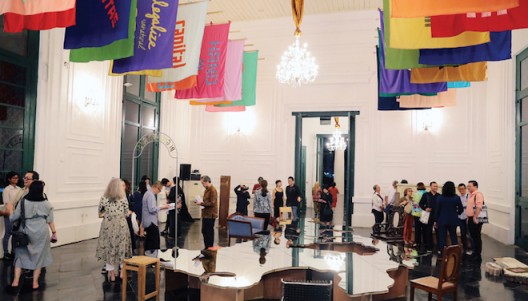
“We Walk Amongst Ghosts” brings with it a collection of colorful and accessible contemporary artworks by the famous names you’d normally see in Jakarta’s swanky galleries or art fairs, but now accessible without a VIP card. Adi Hong-Tan, the exhibition coordinator with Yayasan Mitra Museum Jakarta (Friends of Jakarta Museums Foundation), told me that the purpose of the exhibition is to bring more people closer to art and the Rp.-5,000 admission fee, (USD$ 0.32,) certainly goes a long way in achieving that aim. At the same time, the exhibition poses some difficult questions about the ideological legacies which inform our current realities.
Gaze upwards as you enter the space, and you’ll see Arahmaiani’s “Flag Project” (2006—ongoing), which was displayed at the Museum of Modern and Contemporary Art in Nusantara (Museum MACAN) back in late 2018. The project was inspired by the artist’s work with various communities from Islamic boarding school students to a monastic sect of Tibetan Buddhists. Each flag is embroidered with phrases chosen by the communities, words such as “courage,” “blessings,” and “heart” which explore a common social currency amongst a diverse set of communities. (Perhaps we are not that different after all?)
Michelangelo Pistoletto takes on a similar theme of universality with, “Il Grande Archipelago,” a large mirrored table and 12 chairs, which symbolize the idea of Indonesia as a melting pot of cultures. The table was positioned in the center of the space and the chairs were sourced from 12 distinct regions.
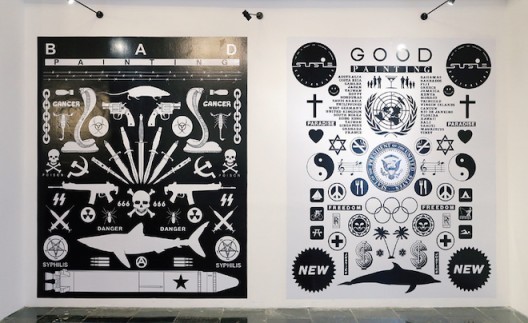
Bali-based Ashley Bickerton’s “Bad; and Good” takes a more black-and-white view of the world, literally—juxtaposing symbols that are considered “bad” and “good” as a means of highlighting the absurdity of a binary morality. The “bad” painting is a stark graphic pattern composed of swastikas, machine guns, and syringes which jump menacingly out from a black background. The “good” painting looks like the kind of poster one might find in a head shop, with yin-yang symbols, palm trees, hearts, and dolphins. These anodyne symbols are interspersed with more ambiguous signs, “the seal of the President of the United States,” the UN symbol, crosses, and a few Rolls Royce logos—a collage of imagery that forces the viewer into their own mental sorting processes.
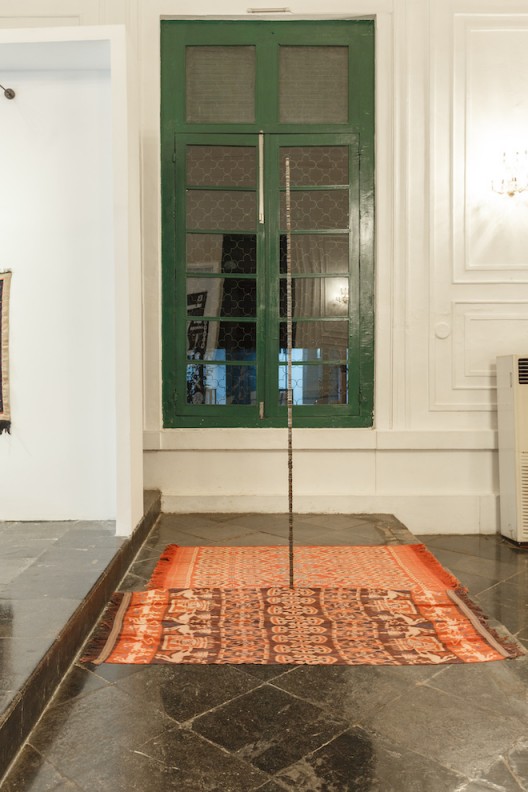
Marco Cassani (also the curator of the exhibition) explores the erosion of value in his “Fountain Negari,” a vertical column of coins collected from temples in Balinese coffee plantations. For the worshipers, these coins were the currency of hopes and dreams; and for the priests who collected them, they represented a fund for temple repairs, but now that are corroded beyond use, they become a construction material for a sculpture—one which asks questions about assigning abstract notions to pieces of metal.
Cassani also used these coins to create an amalgam, which is forged into the words “In God We Trust,” hanging from a metal archway. The work, a co-creation with Fendry Ekel, is an iconic object that immediately becomes political in today’s age of hyper-partisanism. The phrase, though associated with America, speaks volumes in a nation where many people put faith before all else; sometimes in a performative sense, but sometimes with full sincerity.
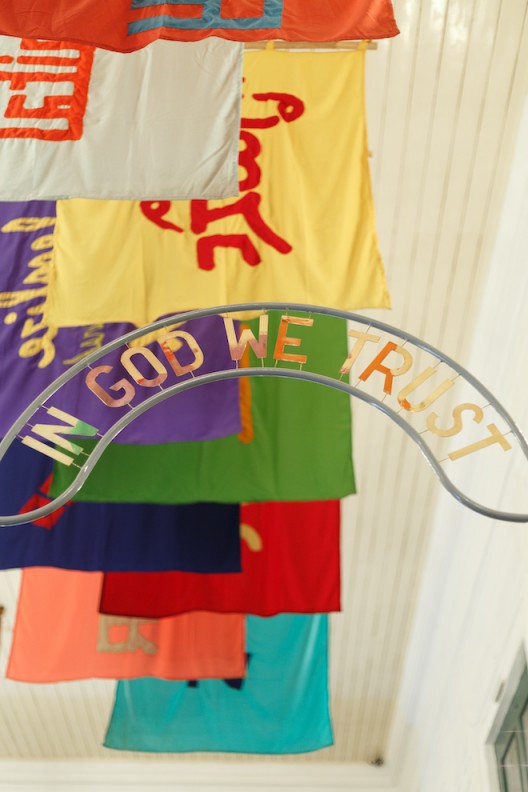
The perpetual transmutation of symbols, the degrading of traditional values, and questioning of ideological systems, be they religious, national or transnational, creates new meaning within the historical specificities of the building and the district, which haunted by ghosts of its own. But in an uncertain future, these ghosts are threatening to return—consistency and conservatism provide a lifebuoy for many in choppy waters. These ghosts are as real and present as the marble columns of the museum and we must navigate them with caution; perhaps the only way of moving forward is to make peace with them.
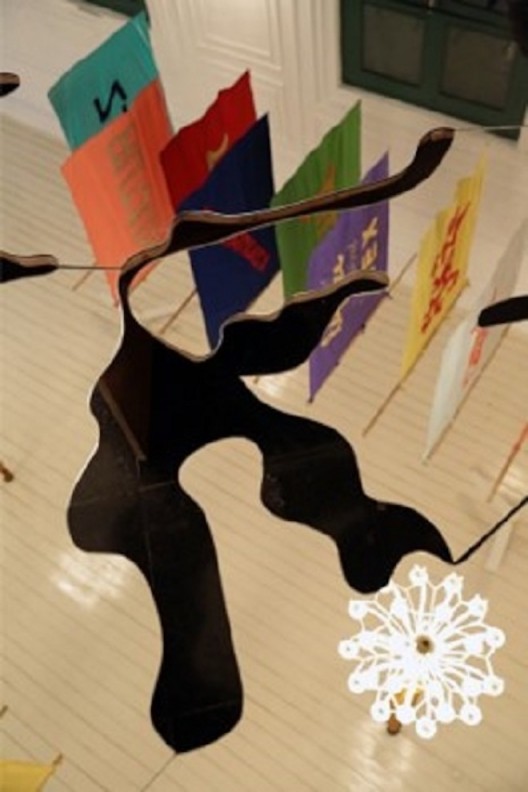



Kayu
Kayu is Lucie Fontaine’s branch in Bali, and was founded by her employee, the artist Marco Cassani. Kayu, as an artist-run-space, explores new ways of collaborating with artists and of presenting artworks, by conceiving and producing contemporary art exhibitions, reflecting upon the concept of power embodied through the host-and-guest relation.
Yayasan Mitra Museum Jakarta
YMMJ envisions Jakarta museums, starting with those under the Jakarta provincial government, as centers of education, entertainment, and recreation; where citizens of and visitors to the city will be able to gain historical, artistic, and cultural knowledge.